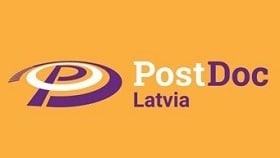Participation in scientific conferences is an integral part of research activities. Usually conferences last for 3-4 days, but presentation of every research has strict time limits (15-20 minutes for presentation and discussion). Although these minutes are important and preparation for them sometimes takes several days, the main goals of participation in the conference lay outside the presentation. Why do we, the researchers, spend time and money and go to scientific conferences?
- Networking. Modern applied science is based on composing expertise in different areas, and a conference is a great place to meet and communicate with other researchers, which allows you expanding your network of academic contacts and, possibly, organize joint research in the future.
- Positioning yourself as an expert. Even if the performance does not cause a stormy reaction from the audience, most likely you will be noticed as a researcher who works in a chosen field. Most likely, your expertise will soon be in demand – as a reviewer or a research proposal partner.
- Expansion of the field of expertise. In our opinion, the opportunity of attending “non-core” sections is one of the main advantages of international conferences. In everyday research, we often concentrate on a narrow field of knowledge and rarely go far from it. At the same time, presentation of specialists from other areas often provide more information for reflection and a new, critical look at our own study.
- Publication in the conference proceedings. Although the role of publication is traditionally overestimated (which, in many respects, is related to the system of scientific work attestation), it is not worthwhile to underestimate it. The conference allows presenting the results of the research relatively fast, marking our priority in the chosen field, and receiving feedback from reviewers and conference participants.
Implementing the project 1.1.1.2/VIAA/1/16/112 «Spatiotemporal urban traffic modelling using big data» (executor: Dr.sc.ing. Dmitry Pavlyuk) we pay special attention to conference presentations. During first 18 months of project implementation we participated in 10 international scientific conferences and continue moving in this direction. During last quarter we prepared abstracts and papers for 6 conferences:
- MT-ITS 2019 (6th International Conference on Models and Technologies for Intelligent Transportation Systems, https://www.mt-its2019.pk.edu.pl), 5-7 June, Krakow, Poland. Presentation topic: Spatiotemporal Traffic Forecasting as a Video Prediction Problem
- EWGT 2019 (22nd meeting of the Euro Working Group on Transportation, https://ewgt19.upc.edu/en), 18-20 September, Barcelona, Spain. Presentation topic: Towards ensemble learning of traffic flows’ spatiotemporal structure
- ITISE 2019 (6th International conference on Time Series and Forecasting, http://itise.ugr.es), 25-27 September, Granada, Spain. Presentation topic: Random Forest-controlled Sparsity of High-Dimensional Vector Autoregressive Models
- RelStat 2019 (19th International Multi-Conference Reliability and Statistics in Transportation and Communication, http://relstat2019.tsi.lv), 16-19 October, Riga, Latvia. Presentation topic: Make It Flat: Multidimensional Scaling of City-Wide Traffic Data
- ILUS 2019 (3rd International Land Use Symposium, http://ilus2019.ioer.info), 4-6 December, Paris, France. Presentation topic: Data-driven spatial structure: a case of traffic flows
TRA 2019 (Transport Research Arena, https://traconference.eu), 27-30 April 2020, Helsinki, Finland. Presentation topic (together with Dr.sc.ing. prof I. Jackiva and Dr.sc.ing. prof. N. Spiridovska): Spatiotemporal dynamics of public transport demand: a case study of Riga.

